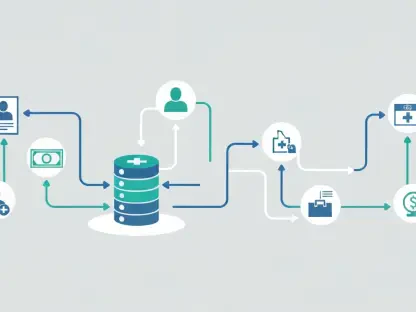Adopting Agile methodology has caused a major transformation in the software development process for numerous organizations. By prioritizing iterative and incremental development, Agile has brought significant improvements in collaboration, efficiency, adaptability, and overall product quality. With the dynamic nature of the technology landscape, development teams continually seek methods that allow them to respond to changing requirements swiftly and effectively. Agile methodology, with its emphasis on flexibility and adaptability, provides the tools and practices needed for this responsiveness. The many advantages demonstrated by Agile have led to its widespread adoption across the industry, fundamentally altering how software is developed and delivered.
The Evolution of Software Development
Software development has undergone a significant evolution, moving from traditional methods to Agile practices. In the early days, developers primarily used linear methodologies like the Waterfall model, which required each phase of development to be completed before moving to the next. This rigid structure often resulted in delays and significant challenges in adapting to changes or unforeseen problems. Organizations began seeking more flexible approaches to overcome these limitations.
The introduction of Agile marked a new era, bringing a more dynamic and responsive approach to software development. Unlike the Waterfall model, Agile embraces fluidity and fosters adaptability through iterative cycles. These cycles, known as sprints, involve the continuous delivery of smaller increments of functional software. This shift has been widely embraced by development teams across the globe, with Agile practices now becoming the standard in many organizations. The real-time adaptability that Agile offers enables teams to stay aligned with changing requirements and market shifts, proving instrumental in meeting modern software development challenges.
Understanding Agile Methodology
At the heart of Agile methodology is its iterative and incremental approach. This method is designed to optimize the development process by breaking it into shorter, manageable cycles. Each cycle, or sprint, typically spans two to four weeks and culminates in the delivery of functional software. This frequent delivery allows for consistent feedback and adjustments, ensuring the project stays on track and aligned with client or user expectations. Agile principles, which prioritize communication, collaboration, and adaptation, foster a transparent and flexible environment for teams to thrive.
Agile methods, such as Scrum, Kanban, and Extreme Programming (XP), each have specific practices but share common principles that guide teams in achieving effective collaboration and productive iterations. Daily stand-ups, sprint planning, sprint reviews, and retrospectives are key events that encourage team members to communicate openly about progress, challenges, and improvements. By focusing on these aspects, Agile teams can better align with changing requirements and objectives, ultimately delivering higher-quality products that meet user needs effectively. The emphasis on frequent inspections and modifications allows teams to address issues early and adapt to emerging requirements seamlessly.
Importance of Iterative Development
Agile’s strength lies in its iterative development process, which stands in stark contrast to traditional methods of completing projects in one extensive cycle. By employing short sprints, teams can deliver increments of working software regularly, enabling faster feedback and quicker adaptations. This approach helps in promptly identifying and resolving issues, significantly mitigating the risk of large-scale failures. Iterative development promotes continuous progress and ensures alignment with user needs and expectations.
In each sprint, specific tasks and features are prioritized based on their value and impact. This prioritization helps ensure the development team focuses on delivering essential functionalities first, fostering a sense of accomplishment and maintaining momentum. Moreover, Agile’s iterative nature supports more effective project management and risk mitigation. Teams can adjust priorities and strategies based on real-time feedback, ensuring the software evolves according to user needs and market demands. This continuous cycle of development, feedback, and adaptation makes Agile a powerful methodology, particularly in fast-paced and evolving industries.
Enhanced Collaboration
One of Agile’s core benefits is improved collaboration among team members. Unlike traditional methods that often compartmentalize roles and responsibilities, Agile encourages open and continuous communication through daily stand-ups, sprint reviews, and retrospectives. These regular touchpoints foster collective problem-solving and facilitate transparency in the development process. By maintaining an open dialogue, teams can address challenges swiftly and work collaboratively towards solutions.
Agile promotes cross-functional teamwork, breaking down traditional silos that can hinder progress. Developers, testers, and product managers work together closely, enhancing mutual understanding and cooperation. Integrated teamwork helps ensure everyone is aligned with the project’s goals and fosters a cohesive unit committed to delivering high-quality software. This collaborative environment not only improves problem-solving but also contributes to a positive team dynamic, boosting morale and productivity.
Boosting Efficiency and Productivity
Agile methodology significantly boosts efficiency by minimizing rework and focusing on delivering high-quality software incrementally. Instead of developing an entire product at once, the Agile approach breaks the project into smaller, manageable tasks that are completed in short cycles. These frequent cycles allow for quicker releases and faster feedback, enabling continuous improvement and optimization of the software. This approach ensures that development efforts remain closely aligned with business goals and user needs.
Efficiency is further enhanced through Agile’s emphasis on continuous feedback loops. Regular input from stakeholders and users helps teams stay on track and make necessary adjustments promptly, keeping the project aligned with its objectives. This constant interaction facilitates better risk management, as potential issues are identified and addressed early in the development process. Agile’s iterative cycles also promote focused work, with each sprint concentrating on delivering specific features or improvements, maintaining a clear trajectory towards the final product.
Agile’s Cultural Impact
The adoption of Agile practices brings about a significant cultural shift within organizations. Agile promotes a culture of self-organization and continuous improvement, empowering teams to take ownership of their work and make decisions collaboratively. This sense of empowerment leads to higher engagement and job satisfaction among team members. Agile practices encourage accountability, with team members directly witnessing the impact of their contributions on the project’s progress.
Moreover, Agile’s emphasis on collaboration builds a supportive and dynamic work environment. The regular interaction and collective problem-solving foster a sense of community and shared responsibility. Teams feel more connected and motivated to achieve common goals, which can lead to increased productivity and innovation. The cultural shift brought about by Agile practices enhances team morale, making the workplace a more positive and productive space.
Customer-Centric Development
One of the most significant advantages of Agile methodology is its customer-centric approach to development. Agile integrates continuous customer feedback into every development cycle, ensuring the product evolves according to real user needs and preferences. This practice replaces the outdated “build it and they will come” mentality with a more strategic “build, measure, learn” mindset. By regularly involving stakeholders and users in the development process, Agile ensures the product meets actual market demands and expectations.
Agile’s customer-centric development approach leads to better alignment with user requirements, driving product success in the market. By collecting feedback throughout the project, teams can make necessary adjustments and improvements along the way, rather than waiting until the final product is delivered. This iterative feedback loop helps maintain relevance and competitiveness in a fast-paced technological landscape, ultimately leading to products that better serve users and stakeholders.
Agile’s Adaptability and Flexibility
One of Agile’s standout features is its adaptability and flexibility in responding to changing requirements and market dynamics. Agile’s iterative nature enables teams to pivot their strategies based on real-time feedback, maintaining alignment with business objectives and user needs. This flexibility is crucial in a fast-paced industry where requirements can evolve rapidly and unpredictably. Agile practices allow for quick adjustments and prioritization of impactful updates, ensuring the product remains relevant and competitive.
Teams using Agile can continuously assess and adjust their approach to development, making informed decisions that support the project’s overall success. This adaptability helps minimize risks and navigate obstacles effectively, keeping the development process smooth and efficient. Agile’s ability to accommodate change seamlessly contributes to its popularity and success in software development, where flexibility and responsiveness are key to delivering valuable products.
Industry Insights and Consensus
Industry leaders agree that Agile significantly enhances software development processes. The methodology’s emphasis on iterative development, continuous feedback, and collaboration results in higher-quality products and more efficient workflows. Agile’s strengths lie in its ability to adapt quickly to changes, fostering a dynamic and responsive work environment that promotes innovation and success.
Agile methodologies cultivate a culture of collaboration and continuous improvement, which benefits overall team performance and productivity. This collaborative approach helps break down silos and encourages cross-functional teamwork, leading to better problem-solving and a more cohesive development process. Industry experts consistently highlight these advantages, reaffirming Agile’s transformative impact on software development.
Summary of Transformative Effects
Adopting the Agile methodology has revolutionized the software development process for numerous organizations. By prioritizing iterative and incremental development, Agile has significantly enhanced collaboration, efficiency, adaptability, and overall product quality. Given the dynamic nature of the technology landscape, development teams are constantly searching for methods that enable them to respond to changing requirements quickly and effectively. Agile methodology, with its focus on flexibility and adaptability, offers the tools and practices necessary for this responsiveness.
One of the key aspects of Agile is its emphasis on continuous improvement and the ability to pivot as needed based on user feedback or shifting market demands. Teams work in short cycles, known as sprints, which allow for regular reassessment and adjustment. This frequent evaluation helps in promptly addressing issues, integrating new ideas, and refining the product continuously.
The numerous advantages demonstrated by Agile have led to its widespread adoption across the industry. Organizations have observed that Agile not only boosts team morale and productivity but also results in more successful project outcomes. This has fundamentally altered how software is developed and delivered, setting a new standard for efficiency and quality in the tech world. As a result, Agile has become a cornerstone in modern development practices, propelling software projects toward greater success and innovation.









